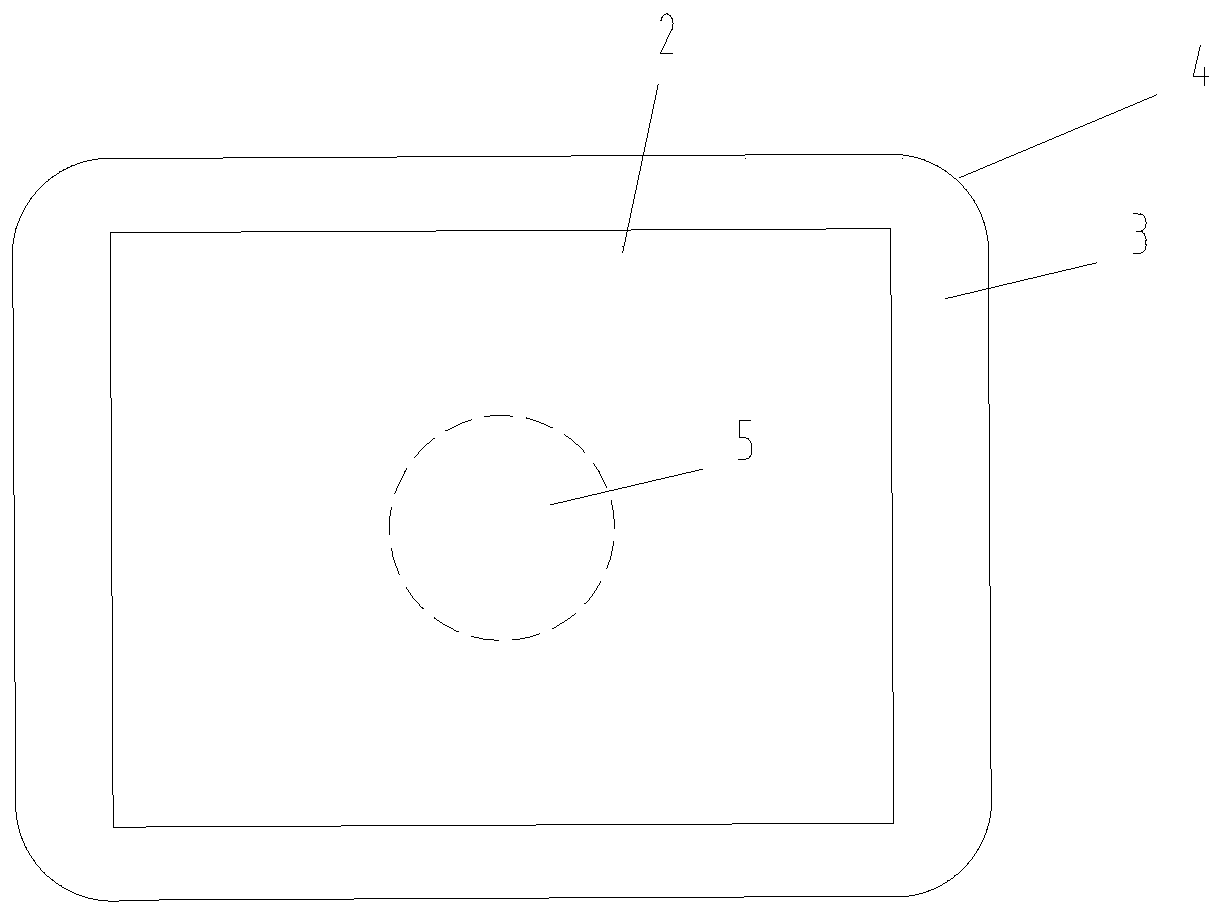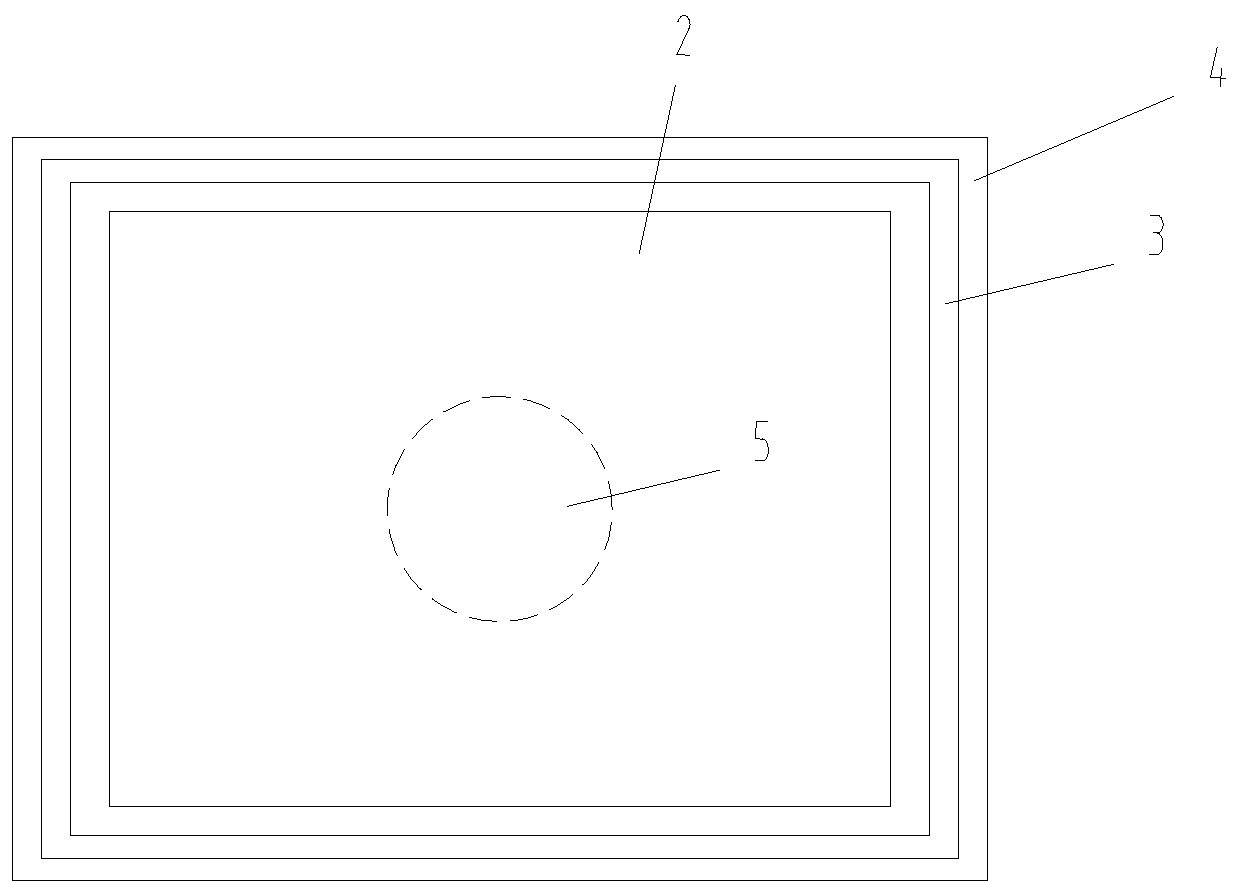Plaster for treating arthralgia
A joint pain and plaster technology, which is applied in the directions of non-central analgesics, medical preparations with inactive ingredients, and medical preparations containing active ingredients, etc. , poor drug compatibility and other problems, to achieve the effect of being conducive to skin breathing, improving air permeability, and reliable adhesion
- Summary
- Abstract
- Description
- Claims
- Application Information
AI Technical Summary
Problems solved by technology
Method used
Image
Examples
Embodiment 1
[0033] Such as figure 1 , 2 As shown, a plaster for treating joint pain includes a peeling layer 1, an ointment layer 2, and a backing layer 4 that are adsorbed in sequence. The four corners of the backing layer 4 are set as rounded corners, which are less prone to floating than right angles and are more securely attached to the skin; the backing layer 4 is made of elastic fiber, which is more elastic; the inner side of the backing layer 4 is divided into the middle and On the periphery, the ointment layer 2 is attached to the middle, and the periphery of the backing layer 4 is provided with an adhesive ring 3, the adhesive ring 3 is close to the ointment layer 2, and the thickness of the adhesive ring 3 and the ointment layer 2 are both 0.1 mm, forming The surface is flat and easy to stick. The peeling layer 1 is attached to the adhesive ring 3 opposite to the backing layer 4, and the adhesive ring 3 and the ointment layer 2 are sandwiched between them for protection. When usi...
Embodiment 2
[0037] Such as image 3 , 4 As shown, a plaster for treating joint pain includes a peeling layer 1, an ointment layer 2, and a backing layer 4 that are adsorbed in sequence. The backing layer 4 is made of elastic fiber, which has great elasticity; the inner side of the backing layer 4 is divided into a middle and a periphery, and the ointment layer 2 is attached to the middle. On the periphery of the backing layer 4, a distance from the ointment layer 2 is provided. The thickness of the adhesive ring 3, the ointment layer 2 is 1 mm, and the upper surface of the adhesive ring 3 gradually declines 0.1 mm from the inside to the outside. The advantage of this setting is to ensure that the ointment layer 2 is always close to the skin and exerts its efficacy. There is a gap between the ointment layer 2 and the adhesive ring 3, which can be adjusted appropriately so that the adhesive ring 3 will not adhere and squeeze to the ointment layer 2, and it can also be used as a ventilation ch...
Embodiment 3
[0040] Such as Figure 5 As shown, the structure of this embodiment differs from the embodiment 1 in that the adhesive ring 3 is different. The adhesive ring 3 becomes a lace wound around the ointment layer 2. Of course, the pattern is not limited to the pattern shown in the figure. Compared with Example 1, the material for the adhesive ring 3 is saved, but by setting it as a multi-line segment and multi-angle pattern, its viscosity can be ensured, and the air permeability can also be increased; moreover, there is a gap between the lace and the outer side of the backing layer 4. The attachment ring 3 is not easy to be coated on the outside of the backing layer 4, and the excess backing layer 4 can protect the adhesive ring 3, and it is not easy to lose its viscosity due to dust on the side.
[0041] The preparation process of the ointment layer 2 is as follows: by weight, first put 30 parts of menthol into 260 parts of 30% water-containing honey mucus and stir evenly to obtain mi...
PUM
| Property | Measurement | Unit |
|---|---|---|
| Thickness | aaaaa | aaaaa |
Abstract
Description
Claims
Application Information
 Login to View More
Login to View More - R&D
- Intellectual Property
- Life Sciences
- Materials
- Tech Scout
- Unparalleled Data Quality
- Higher Quality Content
- 60% Fewer Hallucinations
Browse by: Latest US Patents, China's latest patents, Technical Efficacy Thesaurus, Application Domain, Technology Topic, Popular Technical Reports.
© 2025 PatSnap. All rights reserved.Legal|Privacy policy|Modern Slavery Act Transparency Statement|Sitemap|About US| Contact US: help@patsnap.com



